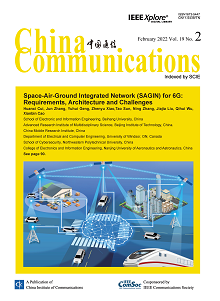BRAIN-COMPUTER-INTERFACE INSPIRED COMMUNICATIONS
Xuelin Gu, Banghua Yang, Shouwei Gao, Honghao Gao, Linfeng Yan, Ding Xu, Wen Wang
2022, 19(2): 62-72.
After abusing drugs for long, drug users will experience deteriorated self-control cognitive ability, and poor emotional regulation. This paper designs a closed-loop virtual-reality (VR), motorimagery (MI) rehabilitation training system based on brain-computer interface (BCI) (MI-BCI+VR), aiming to enhance the self-control, cognition, and emotional regulation of drug addicts via personalized rehabilitation schemes. This paper is composed of two parts. In the first part, data of 45 drug addicts (mild: 15; moderate: 15; and severe: 15) is tested with electroencephalogram (EEG) and near-infrared spectroscopy (NIRS) equipment (EEG-NIRS) under the dual-mode, synchronous signal collection paradigm. Using these data sets, a dual-modal signal convolutional neural network (CNN) algorithm is then designed based on decision fusion to detect and classify the addiction degree. In the second part, the MIBCI+ VR rehabilitation system is designed, optimizing the Filter Bank Common Spatial Pattern (FBCSP) algorithm used in MI, and realizing MI-EEG intention recognition. Eight VR rehabilitation scenes are devised, achieving the communication between MI-BCI and VR scene models. Ten subjects are selected to test the rehabilitation system offline and online, and the test accuracy verifies the feasibility of the system. In future, it is suggested to develop personalized rehabilitation programs and treatment cycles based on the addiction degree.
